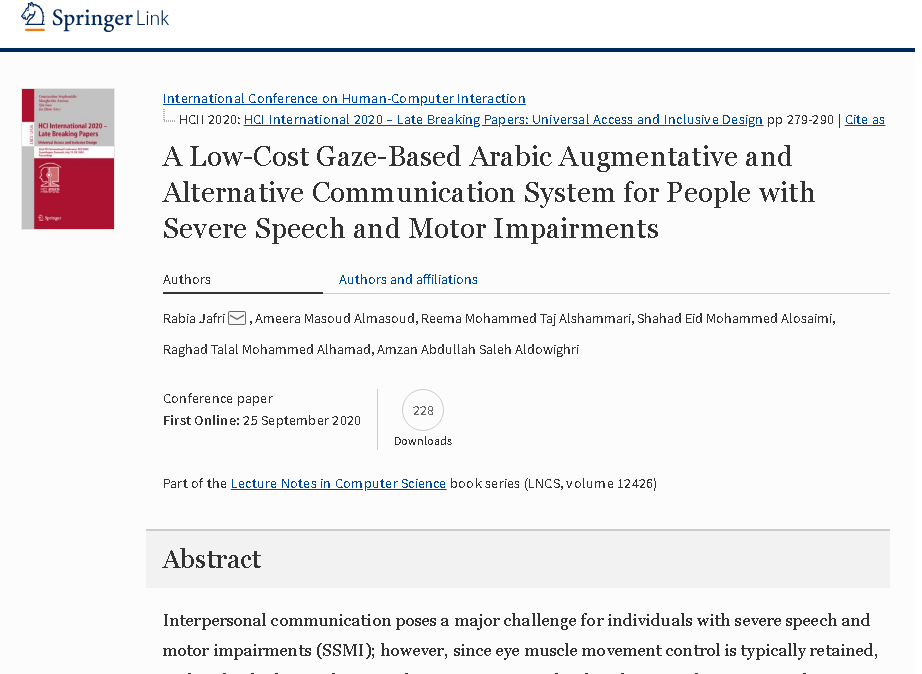
Abstract
Interpersonal communication poses a major challenge for individuals with severe speech and motor impairments (SSMI); however, since eye muscle movement control is typically retained, such individuals can alternatively communicate with others by using their gaze to select symbols on electronic communication boards (CBs). Unfortunately, most of the existing systems offering electronic CBs require the purchase of high-cost eye tracking hardware and software components and do not support Arabic language. We have, therefore, developed a low-cost gaze interaction-based Arabic language application to assist pre-literate and early literate individuals with SSMI whose primary language is Arabic to communicate with people in their vicinity. The system utilizes a webcam and open source software for eye tracking, thus, avoiding the need for expensive proprietary eye tracking components. It offers several CBs from which the user can select items to form sentences that are output as speech. The CBs have been carefully designed taking the users’ cognitive and motor capabilities into consideration and several features to facilitate and expedite the communication process have been included. An interface has also been provided for caregivers to customize the application according to the users’ unique needs by adding and editing items, and setting the user’s profile, the background color and the gender for the speech output. The system has been developed in consultation with a speech-language pathologist to ensure that it is compatible with current therapy practices and the actual needs of the targeted users.
Keywords
Assistive technologies Augmentative and alternative communication Gaze tracking Eye tracking Motor impairments Speech impairments Neuromuscular diseases Arabic communication